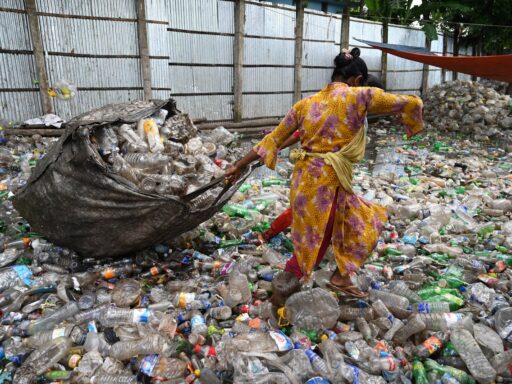eBay, one of the world’s largest and most innovative online marketplaces, is leading the way in sustainability within the e-commerce industry. Established in 1995, eBay has transformed the way people buy and sell goods, creating a dynamic platform that connects millions of buyers and sellers across the globe. What sets eBay apart is its commitment to sustainability and the promotion of a circular economy, which encourages reuse, recycling, and reducing waste, all while supporting a more sustainable way of consuming products.
As e-commerce continues to grow, the environmental impact of online shopping has come under scrutiny, with concerns over packaging waste, carbon emissions from transportation, and the lifecycle of products. eBay’s sustainability journey focuses on addressing these challenges, enhancing responsible consumption, and empowering consumers to make better, more sustainable choices.
In this article, we will explore eBay’s sustainability strategy, initiatives, measurable impacts, and goals for the future, as well as the challenges the company faces in promoting a more sustainable and circular model for online commerce.
eBay’s Sustainability Strategy and Goals
eBay’s sustainability strategy is deeply embedded in its business model and operational practices. The company views sustainability as an integral part of its corporate responsibility, and it has made great strides in leveraging its marketplace to create positive environmental and social impact. eBay’s sustainability goals focus on key areas, including circular economy, climate action, responsible sourcing, and social impact.
Circular Economy: Promoting Reuse and Recycling
At the heart of eBay’s sustainability strategy is its commitment to the circular economy. The company encourages the reuse of products by providing a platform for consumers to buy and sell used goods, making eBay one of the largest second-hand marketplaces globally. By focusing on pre-owned and refurbished products, eBay is helping extend the life cycle of items, reducing the need for new manufacturing and decreasing waste.
eBay’s initiatives to promote the circular economy include:
- Certified Refurbished Program: eBay’s Certified Refurbished program offers high-quality, professionally restored products with warranties. This initiative helps reduce the environmental impact of electronic waste (e-waste) and encourages the reuse of valuable electronics, including smartphones, laptops, and home appliances.
- Marketplace for Pre-owned Goods: eBay’s platform enables buyers and sellers to exchange used items across various categories, from electronics to clothing and furniture, contributing to a reduction in overall consumption and waste generation.
- Sell for Charity: eBay’s charity program allows sellers to donate a portion of their sales to nonprofit organizations. This initiative helps raise funds for environmental and social causes, supporting sustainable development goals (SDGs) across the world.
Climate Action: Reducing Carbon Footprint
As e-commerce operations generate significant carbon emissions, eBay has made strides in reducing its carbon footprint. The company is committed to addressing climate change by improving the sustainability of its operations and reducing emissions from its global logistics and transportation networks.
Key climate action initiatives include:
- Net-Zero Carbon Emissions by 2050: eBay has set an ambitious goal of achieving net-zero carbon emissions by 2050. This includes reducing Scope 1 and 2 emissions from its direct operations and Scope 3 emissions from its supply chain and product transportation.
- Renewable Energy: eBay is working toward powering its global operations with 100% renewable energy by 2025. As of 2023, eBay is already sourcing a significant portion of its energy from renewable sources, including wind and solar power.
- Carbon Offsetting: In addition to reducing emissions, eBay has invested in carbon offset projects to neutralize its residual carbon footprint. The company has partnered with environmental organizations to fund reforestation, renewable energy, and energy efficiency projects in various parts of the world.
Sustainable Packaging
Packaging waste is a significant environmental challenge in the e-commerce sector. eBay recognizes that its role as an online marketplace gives it a unique opportunity to influence sustainable packaging practices, both for the company and for its sellers.
eBay’s sustainable packaging initiatives include:
- eBay Green Packaging Initiative: eBay works with sellers to promote the use of sustainable packaging materials. Through the Green Packaging initiative, eBay encourages sellers to use recyclable, biodegradable, or compostable packaging to reduce waste.
- Partnership with Suppliers: eBay collaborates with packaging suppliers to design sustainable packaging solutions that reduce environmental impacts without compromising the safety and integrity of the products being shipped.
- Shipping Efficiency: eBay also provides incentives for sellers who use sustainable packaging materials and eco-friendly shipping options, further reinforcing its commitment to reducing waste in the e-commerce process.
Social Responsibility: Community Impact and Inclusion
While eBay’s environmental sustainability efforts are a major focus, the company also recognizes its responsibility to foster social equity and inclusive communities. Through various social impact programs, eBay seeks to contribute to the well-being of its global communities by supporting diversity, education, and economic empowerment.
Supporting Local Communities
eBay is committed to creating positive social impact through its platform and business model. Its initiatives include:
- Supporting Small Businesses: eBay empowers small businesses and individual entrepreneurs by providing them with access to a global marketplace. The company has established programs that provide resources and tools to help small sellers grow and scale their businesses.
- Economic Empowerment: eBay’s platform enables entrepreneurs from underserved communities to create sustainable livelihoods by selling their products online. The company also offers discounted fees for non-profit organizations and small businesses to help them reach a wider audience.
- Partnerships with Charitable Organizations: Through the eBay for Charity program, eBay supports thousands of nonprofit organizations by allowing users to donate to causes that matter to them, contributing to societal well-being and environmental sustainability.
Diversity and Inclusion
As part of its commitment to social equity, eBay has prioritized diversity and inclusion within its workforce and leadership. The company strives to create an inclusive culture that values diversity and ensures equal opportunities for all employees.
- eBay has established goals to increase diversity in leadership roles and improve workplace representation for people of color and women in technology roles.
- eBay also focuses on improving employee well-being by offering flexible working arrangements, mental health resources, and well-being programs to support its diverse global workforce.
Education and Digital Literacy
eBay recognizes the importance of digital literacy and has partnered with several organizations to help underserved communities gain access to digital tools and training. The company supports education initiatives through its eBay Foundation, which funds programs focused on improving access to technology and digital skills.
eBay’s efforts to promote STEM education include:
- Partnerships with local schools and nonprofits to provide students with access to technology and learning resources.
- Online training programs designed to teach individuals the skills they need to succeed in the digital economy.
Measurable Impacts and Achievements
eBay has made significant progress toward its sustainability goals, with measurable impacts across various areas:
| Sustainability Metric | Goal | 2023 Status |
|---|---|---|
| Carbon Emissions Reduction | Net-zero carbon emissions by 2050 | 20% reduction in carbon footprint from 2019 |
| Renewable Energy Use | 100% renewable energy by 2025 | 50% of global operations powered by renewable energy |
| Circular Economy and Product Reuse | Increase in pre-owned and refurbished products | Over 60 million used items sold through the platform in 2023 |
| Sustainable Packaging | 100% recyclable or compostable packaging by 2025 | 80% of products shipped with sustainable packaging |
| Support for Small Businesses | Empower small businesses to sell globally | Over 1.7 million small businesses reached globally |
| Digital Literacy Programs | Increase access to digital skills and technology | 2 million individuals reached through educational programs |
Challenges and Areas for Improvement
Despite its progress, eBay faces several challenges in driving sustainability at scale:
- E-Waste Management: Although eBay promotes the reuse and resale of electronics, managing the growing volume of e-waste remains a significant challenge for the industry. Scaling recycling and refurbishing systems is complex and requires more widespread collaboration with partners.
- Carbon Offsets and Scope 3 Emissions: While eBay has made strides in reducing emissions from its own operations (Scope 1 and 2), the company’s Scope 3 emissions (from its supply chain and transportation) remain a challenge. The company will need to work closely with sellers, logistics partners, and customers to reduce emissions across the entire value chain.
- Packaging Waste: While eBay is promoting sustainable packaging, there is still room for improvement in encouraging smaller sellers to adopt eco-friendly packaging. Education and awareness campaigns targeting sellers are essential to reduce packaging waste across the platform.
Future Plans and Long-Term Goals
eBay has set ambitious sustainability goals for the coming years, including:
- Achieving 100% renewable energy for its global operations by 2025.
- Reducing packaging waste through innovations in zero-waste packaging solutions.
- Expanding circular economy initiatives to ensure 100% of products listed on the platform are reusable or recyclable by 2030.
- Promoting sustainable consumption by providing consumers with tools to make informed, eco-friendly choices when shopping online.
eBay’s future strategy also includes expanding its global impact by collaborating with local governments, NGOs, and other stakeholders to create sustainable e-commerce ecosystems that benefit all stakeholders.
Competitor Comparisons
As eBay strives to be a leader in sustainable e-commerce, it competes with several other giants in the industry that are also advancing their sustainability efforts. Below is a comparison of eBay’s sustainability goals and initiatives against Amazon, Alibaba, and Etsy:
| Company | Net Zero Target | Circular Economy Initiatives | Sustainable Packaging Commitment | Carbon Emissions Goals | Digital Inclusion/Impact |
|---|---|---|---|---|---|
| eBay | 2050 | Certified Refurbished Program, Marketplace for Pre-owned Goods | 100% recyclable or compostable by 2025 | 20% reduction from 2019 by 2023 | 2 million individuals reached via digital literacy programs |
| Amazon | 2040 | Pre-owned & Refurbished Products through Amazon Renewed | 100% recyclable packaging by 2025 | Achieve net-zero carbon by 2040 | Supporting small businesses via Amazon Small Business Accelerator |
| Alibaba | 2030 | Green Supply Chain, 2nd-Hand Goods Marketplace | 100% recyclable packaging by 2030 | Carbon-neutral logistics by 2030 | 1 million small businesses supported via AliExpress |
| Etsy | 2030 | Marketplace for Handmade & Vintage Goods | Carbon-neutral shipping by 2020, 100% recyclable packaging by 2025 | Reduced emissions by 30% per sale from 2018 | Empowering artisans globally with e-commerce training |
Insights from Competitor Comparisons
- Amazon: Amazon has the most aggressive timeline among its competitors, aiming for net-zero carbon emissions by 2040. However, its scale of operations and supply chain complexity make it a challenge to meet these goals. Amazon has invested heavily in sustainable packaging and renewable energy, but Scope 3 emissions from its vast logistics network remain a significant hurdle.
- Alibaba: Alibaba, focusing on the Chinese and global markets, has made strides with green supply chain initiatives and its second-hand marketplace, positioning itself as a leader in circular e-commerce. However, its timeline for net-zero emissions is set at 2030, which is more conservative compared to eBay and Amazon’s 2050 and 2040 goals, respectively.
- Etsy: Etsy has an established commitment to carbon-neutral shipping, and the platform focuses primarily on handmade, vintage, and sustainable goods. Etsy’s sustainability initiatives are built into its core business model, offering customers a marketplace for sustainable and low-carbon products. Etsy’s carbon-neutral status is impressive, but it has less emphasis on large-scale pre-owned goods and technology innovations compared to eBay.
eBay has positioned itself as a sustainability leader in the e-commerce sector, especially with its emphasis on the circular economy, refurbished goods, and sustainable shipping practices. While Amazon and Alibaba are also implementing comprehensive sustainability programs, eBay’s focus on second-hand products and sustainable marketplace practices gives it a unique competitive edge. However, like all e-commerce companies, eBay will need to continually innovate to address its Scope 3 emissions, packaging waste, and global supply chain sustainability, areas that are still evolving for the industry.
Sources
eBay Sustainability Report 2023: https://www.ebayinc.com/impact/
Circular Economy: https://www.circular-economy.org.uk/
Carbon Offsetting Projects: https://www.carbontrust.com/
eBay for Charity: https://www.ebay.com/charity






